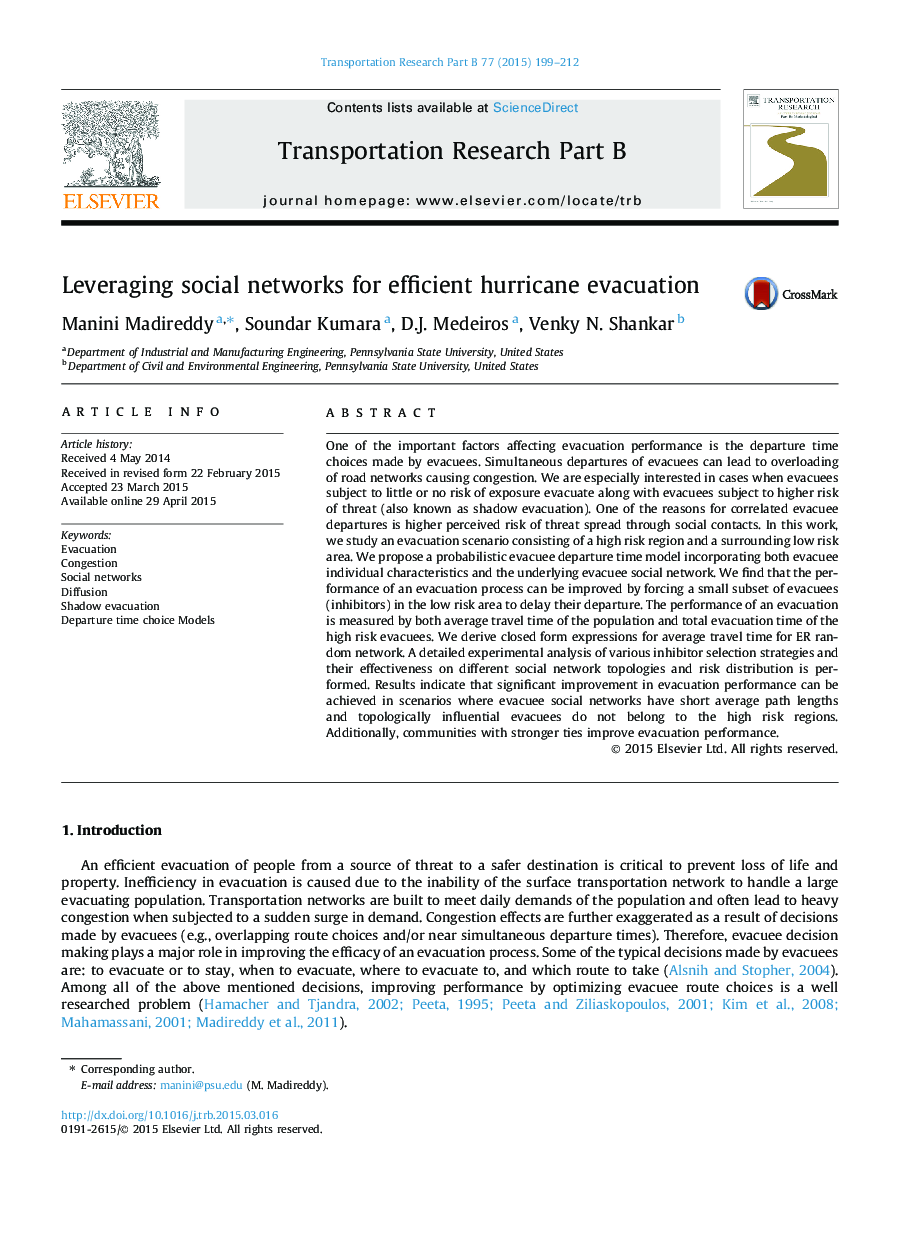| Article ID | Journal | Published Year | Pages | File Type |
|---|---|---|---|---|
| 1131841 | Transportation Research Part B: Methodological | 2015 | 14 Pages |
•Propose social network based hurricane evacuee departure time choice model.•Study the effect of evacuee behavior on evacuation performance.•Evacuation process can be improved by forcing a subset of evacuees (inhibitors) to delay their departure.•Derive closed form expressions for travel time for ER random network.•Identified scenarios where a significant reduction in travel time can be achieved.•Inhibitors tend to lower the loading rate of low risk regions helping faster evacuation of high risk regions.
One of the important factors affecting evacuation performance is the departure time choices made by evacuees. Simultaneous departures of evacuees can lead to overloading of road networks causing congestion. We are especially interested in cases when evacuees subject to little or no risk of exposure evacuate along with evacuees subject to higher risk of threat (also known as shadow evacuation). One of the reasons for correlated evacuee departures is higher perceived risk of threat spread through social contacts. In this work, we study an evacuation scenario consisting of a high risk region and a surrounding low risk area. We propose a probabilistic evacuee departure time model incorporating both evacuee individual characteristics and the underlying evacuee social network. We find that the performance of an evacuation process can be improved by forcing a small subset of evacuees (inhibitors) in the low risk area to delay their departure. The performance of an evacuation is measured by both average travel time of the population and total evacuation time of the high risk evacuees. We derive closed form expressions for average travel time for ER random network. A detailed experimental analysis of various inhibitor selection strategies and their effectiveness on different social network topologies and risk distribution is performed. Results indicate that significant improvement in evacuation performance can be achieved in scenarios where evacuee social networks have short average path lengths and topologically influential evacuees do not belong to the high risk regions. Additionally, communities with stronger ties improve evacuation performance.
